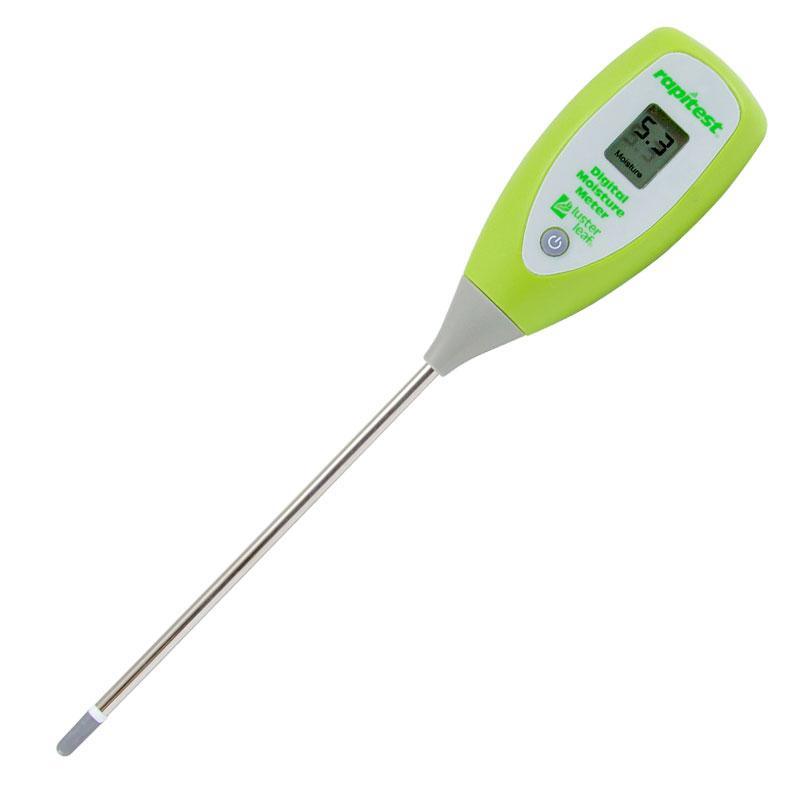Understanding the Relevance of a Moisture Meter in Protecting Against Mold and Water Damages in Your Home
In the realm of home upkeep, the presence of moisture can commonly be a quiet yet formidable adversary, qualified of causing pervasive mold and mildew development and dangerous water damages if left untreated. Recognizing the significance of a moisture meter in this fight is not simply an alternative yet a strategic necessity.
Significance of Moisture Discovery
Reliable dampness discovery approaches are essential for securing properties and avoiding prospective mold and mildew development and water damage. Moisture can seep right into different building materials, leading to structural issues and health risks. By utilizing a moisture meter, residential or commercial property owners can proactively identify locations vulnerable to excess moisture, enabling prompt treatment and mitigation techniques.
Moisture meters give accurate analyses of wetness degrees in different materials such as concrete, drywall, and timber. This data assists in determining locations of worry, also in hard-to-reach or hidden areas. Early detection of dampness build-up enables punctual fixings or changes to avoid further damages.

How Moisture Meters Job
Wetness meters play an essential duty in the proactive identification of excess wetness, helping in the avoidance of prospective mold and mildew development and water damages by giving exact readings of moisture levels in various building materials. Some advanced moisture meters combine both pin and pinless technologies for detailed wetness discovery. Understanding how moisture meters feature is crucial for prompt and exact moisture degree evaluations, enabling efficient precautionary steps against mold and water damage.
Detecting Early Caution Indicators
Upon first assessment of a residential or commercial property, acknowledging refined indications of excess dampness ends up being crucial in the very early discovery of potential mold and mildew development and water damages. Some typical early caution signs include stuffy odors, water stains on ceilings or walls, peeling off paint or wallpaper, and distorted or discolored surface areas. Mildewy smells frequently indicate the existence of mold or mildew, also if no visible signs are noticeable. Water stains can indicate leaks or seepage, while peeling off paint or wallpaper may be a result of dampness jeopardizing the adhesion of these materials to the surface. Warped or blemished surfaces, such as bending floorboards or stained drywall, are clear signs of water damages. Additionally, a rise in allergy signs and symptoms or breathing issues amongst occupants may recommend the existence of mold because of excess dampness. By promptly identifying and resolving these early indication, house owners can alleviate the threat of comprehensive mold and mildew development and water damage a fantastic read in their homes.
Avoiding Mold And Mildew Growth
Identifying early indication of excess dampness within a residential or commercial property not just makes it possible for punctual discovery of potential mold development and water damages yet also offers as a positive step in avoiding the expansion of mold. To properly protect against mold growth, it is vital to resolve any type of sources of dampness without delay. This can consist of fixing leakages in pipes, roof coverings, or home windows, making certain appropriate air flow in moist locations like kitchens and shower rooms, and using dehumidifiers in high-humidity areas. Consistently checking and maintaining the property's plumbing, roofing system, and seamless gutters can also aid in protecting against water intrusion that might bring about mold growth.
Along with dealing with moisture sources, keeping indoor moisture degrees listed below 60% can significantly inhibit mold growth. Appropriate ventilation, appropriate insulation, Recommended Reading and making use of a/c or followers can help manage interior moisture levels. Keeping an eye on moisture levels in areas prone to dampness, such as cellars and crawl areas, using a moisture meter can additionally aid in very early discovery of raised wetness levels and possible mold growth. By taking proactive actions to stop excess wetness and mold growth, home owners can guard their building and interior air top quality.
Benefits of Routine Surveillance
Regular surveillance of wetness levels in a home can play an essential duty in preserving a healthy interior environment and protecting against prospective mold and mildew and water damage. By frequently examining moisture degrees, home owners can find any type of concerns promptly and take needed activities to stop mold growth and water damages. Among the key advantages of regular tracking is very early detection. By determining and resolving high wetness degrees at an early stage, house owners can interfere before mold and mildew has the opportunity to develop and spread out. This aggressive technique can save both time linked here and cash over time by preventing substantial mold and mildew removal and repair expenses.
Additionally, regular tracking allows homeowners to track patterns and patterns in moisture levels over time. Inevitably, the constant tracking of dampness levels encourages property owners to protect their property, secure their wellness, and protect the honesty of their indoor environment.

Final Thought

By making use of a dampness meter, residential property proprietors can proactively determine locations vulnerable to excess dampness, permitting for prompt treatment and reduction approaches.

Keeping an eye on wetness levels in areas vulnerable to moisture, such as cellars and crawl spaces, using a dampness meter can additionally aid in early discovery of raised wetness levels and potential mold and mildew development. (Moisture Meter)
Comments on “The Ultimate Overview to Picking the Right Moisture Meter for Your Demands”